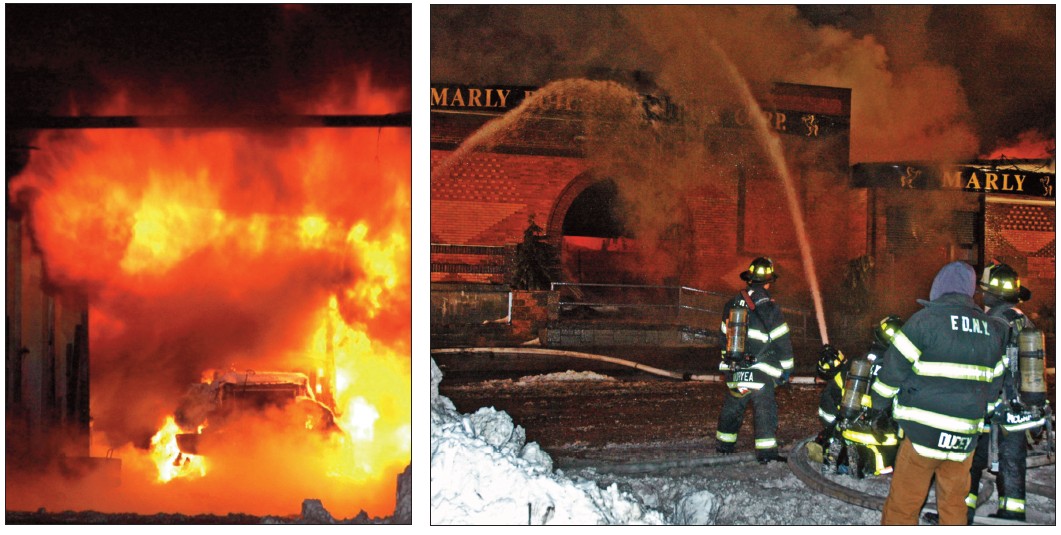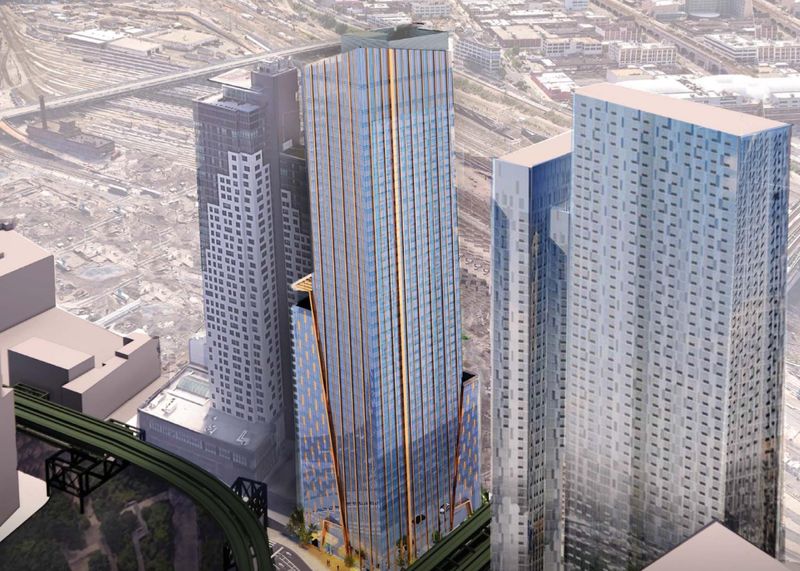Activists Clash At Latest QueensWay Meeting
The QueensWay proposal is moving ahead despite a nearly even split in support with passion on both sides of the tracks evidenced by concerned citizens speaking their minds both for and against the idea in Ozone Park last Wednesday, Mar. 26.

The Friends of the QueensWay- supporters of a plan to build a linear, 55 acre park atop the defunct Rockaway Beach Long Island Rail Road tracks-held a second series of public workshops in Ozone Park and Forest Hills last week to present information about the park and hear from residents.
After a brief presentation by Adam Lubinsky-managing principal at WXY architecture and urban design, which displayed slick renderings depicting the proposed park-tables were provided for smaller group discussions.
Many did talk at tables, but more walked about, finding interesting discussions themselves.
The firm also produced and distributed a booklet based on input from several communities and featured section by section descriptions of six park areas. The named areas are, from north to south: The Clearing; North Passage; Metropolitan Hub; Forest Park Grove; South Passage and The Elevated.
In the booklet, the vision for each section is pictured, with access points, ballfields, bike paths and dog parks receiving special mention.
Also depicted were proposed improvements the park would enable, including upgrades to existing spaces such as the Forest Hills Little League. On consecutive pages were a photo of the little league park currently, with potential conditions in a rendering opposite.
Many more community resources are provided in presentation of the project, including an art path and outdoor gathering space, but many are not convinced it’s an appropriate use of the land.
Advocacy groups No Way QueensWay and the Queens Public Transit Committee attended Wednesday night and oppose the park plan.
The No Way group opposes “any development along the abandoned Rockaway branch of the Long Island Rail Road,” according to a flier distributed at the meeting.
Co-founder Neil Giannelli lives on 98th Street in Woodhaven and his house borders the abandoned property.
He attended last Wednesday night’s meeting, but abruptly stormed out when he was introduced as representing State Sen. Joseph Addabbo.
“I’m here as a homeowner and a taxpayer,” Giannelli, who is employed by Addabbo but not at the meeting in any official capacity, said before exiting after less than five minutes.
Phil McManus, chairman of the Queens Public Transit Committee wants the tracks restored for light rail or subway use to shorten the commute into Manhattan and relieve some of the overcrowding on other transit in the borough.
Instead of a park, McManus believes the unused tracks should be rehabilitated for light rail or subway extension service.
The tracks run north to south, nearly parallel to Woodhaven Boulevard and Cross Bay Boulevard from Howard Beach to Richmond Hill, one of the busiest and only reliable such routes in Queens.
The LIRR operated the Rockaway Beach Line from Rego Park to Ozone Park until 1962, when it was taken out of service. Part of the line south of Liberty Avenue was added to the subway system, while the majority of the branch was left unused-and became naturally reforested in the decades since.
Fliers from Friends of the QueensWay and No Way Queens Way argue that rail reactivation is not feasible due to cost, environmental damage, reduced privacy, quality of life issues and safety.
Explaining his position, McManus said, “We’re the train people,” though his group is advocating for better public transit on all fronts
He expressed frustration over long commute times, both within the borough and to Manhattan. He believes reinvesting in the line would be a first-step towards the long-term goals of alleviating overcrowding, reducing wait-times and shortening commutes.
“Do we want a small exclusive park that will further divide the people of Queens?” he asked during a phone conversation.
McManus, through his advocacy work, has come to realize, “a lot of people still don’t understand there’s an issue” he said, and explained “our concern is to keep trains on line even though it’s been down for years.”
Two other transportation advocacy groups also support the idea of restoring the line for transportation.
These include Move NY, created in part by “Gridlock” Sam Schwartz and the Regional Planning Association.
The MTA’s 20-year capital needs assessment plan, released in 2013 also mentions revitalizing the unused tracks which remains available as a right-of-way rail.
The report specifically mentions the Rockaway Beach Line as a possible route “linking Howard Beach and Ozone Park with Woodhaven as transverse routes linking radial subway lines.”
One vocal resident in favor of the park plan, Anne Green, of 102nd Street in Richmond Hill attended Wednesday night’s meeting and told the crowd of herself and others that, “we are residents and we are highly supportive of this project.”
She believes it will provide much needed park space, reduce car travel to Forest Park, encourage the city to invest more in Forest Park and support business growth along Jamaica Avenue.
Both Green and her husband support the project and think it could help boost property values and wold be “a chance for new businesses to flourish on avenues like Jamaica that currently struggle,” she said in an email.
Green believes the QueensWay would provide “a direct connection between southern neighborhoods to the many businesses in Forest Hills, Glendale and Rego Park. And added, “It would be wonderful to be able to walk or bike to stores that we currently have to drive to reach safely.”
After this latest workshop, Friends of the QueensWay plans to develop a final report during the summer and then begin building political support for the project by the fall.
All of the competing proposals are currently being studied by a group of academics that includes Queens College geography Professor Scott Larson. It is titled “A Community Impact Study of Queens’ Forgotten Spur.” The group hopes to release their report by the end of the summer.
The study will not be strictly focused on the feasibility of restoring transit lines or project costs associated, but will take a global approach to evaluating the options based on impact to Queens.
More information on the QueensWay plan can be found online at www.thequeensway.org.

































